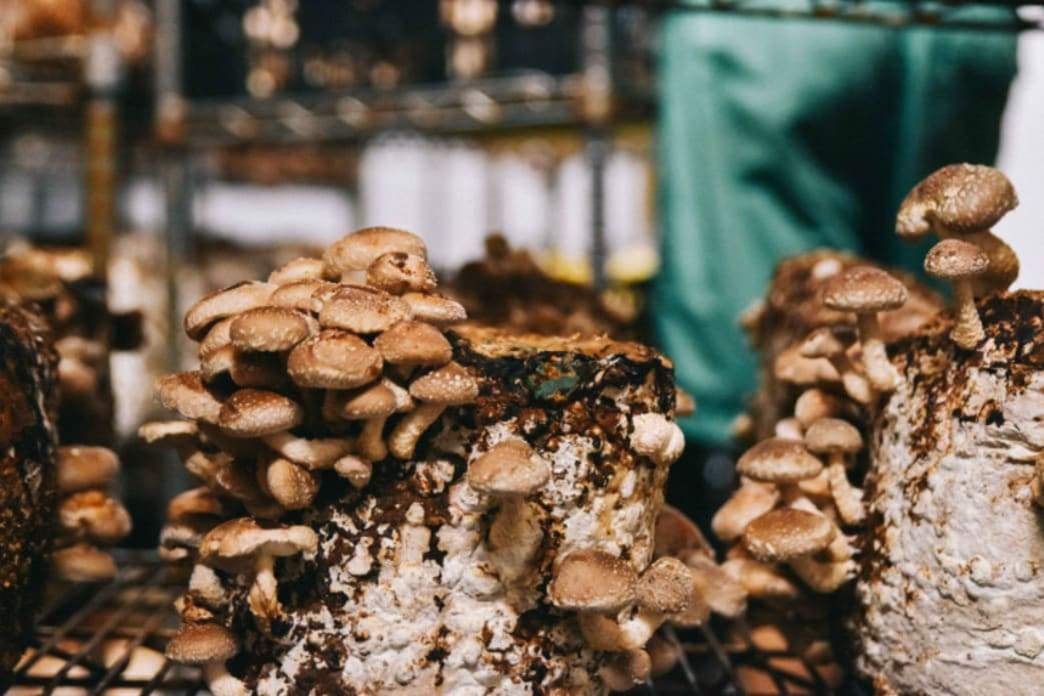What is fully-colonized substrate? We discuss that information here, and provide ways for you to get your own for growing mushrooms at home or commercially
What is substrate, and specifically, what is fully-colonized substrate? Well, to begin, “substrate” is basically a fancy word for food. Therefore, mushroom substrate is food for the mushroom mycelium to consume. Mushrooms will eventually fruit from the fully-colonized substrate once the conditions are right.
Fully-colonized substrate is substrate that the mycelium has grown out into to a degree that mushrooms can be grown from. When the substrate is inoculated with mushroom spawn, which is done by putting the mycelium in the substrate, the mycelium grows all throughout the substrate and cannot be separated. The two become one. The fungus cannot be separated from the substrate itself, but mushrooms will grow from the fully-colonized substrate with the proper conditions.
Common mushroom substrate examples to know and grow with
Some common substrates used for mushroom growing are woodchips, logs, straw, coffee grounds, and supplemented sawdust.
At Fungi Ally, we provide sawdust spawn, grain spawn, and plug spawn, which can be used with these substrates. However, each has its own use. For instance, if you are using woodchips, straw, coffee grounds, or supplemented sawdust as your substrate, you should focus on using either grain spawn or sawdust spawn. Plug spawn is used for growing on logs, stumps, or rafts. Sawdust spawn can also be used to inoculate logs.
Let’s take a deeper look at each of these types of spawn.
Grain spawn is usually a lower generation and has a higher nutrient profile. This makes grain spawn a good option when the substrate will be further expanded or if you want to add additional nutrients into the substrate. For example, grain spawn can be further expanded into more grain spawn or into a supplemented sawdust fruiting block. You can also inoculate straw or straight sawdust with grain spawn, adding additional nutrients into the substrate.
Plug spawn is mycelium grown out on birch furniture dowels. Our dowels are 5/16” diameter and 1” long. Plug spawn is a great option if you are inoculating no more than 20 logs. Plug spawn is a little bit more expensive than sawdust spawn and takes slightly longer to colonize, but it is generally easier to inoculate into logs than sawdust spawn.
Sawdust spawn is the most common type of spawn used for outdoor mushroom production. Sawdust is usually the cheapest of the spawn options and has a relatively quick leap-off because of the small particle sizes. With sawdust spawn, the mycelium can rapidly colonize new substrates. Our sawdust spawn is third generation and comes in bags of 5.5 pounds. You can place the sawdust spawn into holes you drill into the logs for inoculation. However, if you are planning on inoculating more than 20 logs with sawdust spawn, then it is a good idea to use a tool known as a palm inoculator. It will make the process much quicker.
Understanding different generations of spawn
The generations of mushroom spawn are very straight forward. The first substrate inoculated from a petri dish is usually grain and called Generation 1. This is then expanded 8-10x into more grain which is Generation 2 grain. From here, we either sell the grain spawn or go to Generation 3 sawdust or plug spawn. Most growers do not transfer beyond 4 generations for fear of the strain losing vigor in fruiting, a phenomenon called strain senescence.
Commonly used additives for developing fully-colonized substrate
Oats and gypsum are commonly added for micronutrients and calcium for the mycelium to grow effectively. These two are mainly used when not trying to fruit mushrooms, but for growing out mycelium with fast growth.
The base mushroom substrate used when fruiting mushrooms is generally hardwood sawdust. We recommend attempting to source this from a mill local to your area. Sawdust is a good substrate because the particles are relatively small and easily consumed by the mushroom mycelium.
Two commonly-added ingredients to sawdust as a mushroom substrate for fruiting are wheat bran and soybean hull. Wheat bran is added specifically for growing shiitakes, and the soybean hull is great for growing oysters, lion’s mane, and other species.
One important note regarding mushrooms and gluten: all the gluten that is in wheat is broken down by the mycelium, so that protein is no longer there.
Preparing fully-colonized substrate and incubation
The first step is mixing the substrate. We originally did this by hand, but after three years, we started using a ribbon mixer. When the mixer is on, the ribbon moves around the substrate while also adding water. Having this machine allows for a much easier mixing process.
Incubation is necessary in order to develop fully-colonized substrate after introducing the mycelium. Incubation is the period where you can sit back, relax, and let the mycelium grow out.
Incubation generates heat, and you may need to have a cooling system if you are doing a lot of incubation at once. If you just have a well-insulated building, you tend to not even need heat even in the winter. The mycelium generates enough heat that it can hold its own.
A big consideration for incubation on mushroom farms is how long are we going to let our substrates sit in the incubation. For instance, shiitake, being the most cultivated specialty mushroom, actually takes the most amount of time to cultivate. Shiitakes are usually in incubation for six to 10 weeks, whereas almost all of the other specialty mushrooms, except maitake and maybe reishi, are all growing in about 14 days in incubation. So it's a quick turnover for mushrooms like oysters, chestnuts, nameko, lion’s mane, and pioppino.
Are you looking for fully-colonized spawn to develop your fully-colonized substrate? Check out our options below!

